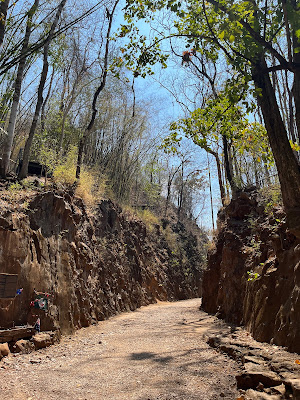The Many Days of ANZAC is a documentary film which premiered on Australian television (ABC) in 2022.
The subtitle is
A History of ANZAC Commemoration in Australia
Here is some basic information about it:
** Narrator and presenter = Mark Lee
** Writer and producer = Brett Evans
** Run time = 57 minutes
ABC Australia was founded in 1932. At first it was only radio. Television was added in 1956.
This film was made by ABC Australia in order to mark and celebrate the 90-year anniversary of the company.
This film wants to answer three questions regarding the commemoration of ANZAC day in Australia:
# 1. How did this tradition start?
# 2. Why has it lasted so long?
# 3. Where is it marching towards?
This film covers the creation of ANZAC and explains how ANZAC day became an important moment in the lives of many Australians.
During World War One, Australia and New Zealand were active supporters of the Entente, which included the UK, France, and Imperial Russia.
In 1914, Australia and New Zealand formed a common military force known as ANZAC. The letters stand for Australia and New Zealand Army Corps.
ANZAC forces were involved in the Gallipoli campaign which began on 25 April 1915. The campaign lasted until the beginning of 1916 when it was abandoned.
The Gallipoli campaign was a military disaster for the allied forces, including the ANZAC forces.
The only successful part of this campaign was the evacuation from the Gallipoli peninsula which began in December 1915 and ended in January 1916.
The day on which the invasion began (25 April) is known as ANZAC day. This date was marked for the first time in April 1916. It is still an important date which is marked in Australia, New Zealand, Turkey, and many other locations
This film covers the history of ANZAC day in Australia. What it was in the past. What it is today. And where it may be going in the future.
This film is good but not great. Because it has a flaw. A serious omission. This film does not mention an important chapter of World War II.
Let me explain:
During World War II, Australia and New Zealand were active supporters of the Allies which included the UK, France, and later the US and the USSR.
In February 1942, many soldiers from the allied powers (including Australia and New Zealand) became prisoners of war when Singapore capitulated to Japanese forces.
During the war, many of these soldiers were transported to Thailand where they were forced to work on the Burma-Thailand Railway - aka the Railway of Death - which was built in order to have a railway connection between Thailand and Burma.
On or near 25 April 1943, Japanese guards ordered the POWs to begin work on a section of the railway which became known as Hell Fire Pass.
The workers were ordered to cut a path through a mountain. The Japanese were in a hurry. The workers were forced to work in a day shift and a night shift.
During the night, when fires were burning to light up the area, this place looked like hell on earth. The prisoners of war named it Hell Fire Pass.
Some of the POWs were from Australia and New Zealand.
By a strange coincidence, the construction of this section of the railway began on or near 25 April. The same date as the beginning of the Gallipoli campaign during World War One.
Since World War II, ANZAC day is marked to remember two occasions: the Gallipoli invasion in 1915 and the construction of Hell Fire Pass in 1943.
Every year, ANZAC day is commemorated in Thailand. The ceremony, which takes place at dawn in a special area next to Hell Fire Pass, is organized by the embassies of Australia and New Zealand in Thailand.
Neither the fall of Singapore in February 1942 nor the construction of the Burma-Thailand Railway in 1943 is mentioned in this film.
The history of the place which is known as Hell Fire Pass is not mentioned.
This omission is sad and deplorable.
This film has a short chapter about events in 1943. But this chapter is about events in Australia. The work in Hell Fire Pass is not mentioned.
Perhaps Brett Evans and his team are not aware of the fact that ANZAC day is also marked and commemorated in order to remember the construction of the railway in Hell Fire Pass in 1943?
I like this film and I want to give it a good rating. But as you can see, it has a flaw, which cannot be ignored.
I have to remove one star because of this flaw. This film deserves a rating of four stars (80 percent).
REFERENCE
Please visit the ANZAC Portal where you can find special sections about the following items:
(1) The Burma-Thailand Railway
(2) Hell Fire Pass
(3) The Hell Fire Pass Interpretive Centre
*****
ANZAC Day
25 April
*****
Hell Fire Pass
Also known as the Konyu Cutting
Kanchanaburi Province
Thailand
*****
A commemoration of
ANZAC Day held at
Hell Fire Pass
Thailand
*****
Hell Fire Pass Interpretative Centre
Kanchanaburi Province
Thailand
*****





No comments:
Post a Comment